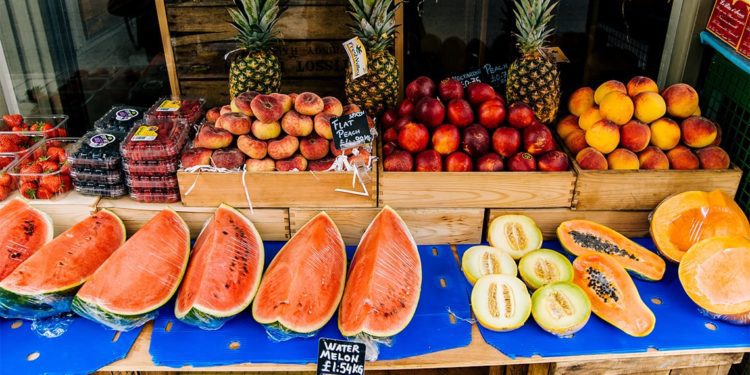Welcome to a journey where nutritious eating meets budget-conscious living. In this guide, we’ll explore savvy ways to shop for healthy foods on a budget while indulging in delightful recipes that won’t break the bank.
Are you ready to discover the secrets of economical, health-conscious grocery shopping? Let’s dive in!
- The 5-Second Rule: Is It Really Safe?
- Prioritize Frozen, Canned, and Dried Foods
- Embrace Freezing Produce for Freshness and Savings
- Master the Art of Comparing Unit Prices
- Buy Smart by Purchasing in Bulk
- Explore Nutrient-Rich Greens at Your Grocery Store
- Simplify Your Cooking with Delicious and Affordable Recipes
The 5-Second Rule: Is It Really Safe?
We’ve all heard of the 5-second rule when it comes to dropped food. While it’s true that picking up food within five seconds of falling is generally safe, the main issue is our discomfort with germs. To avoid mishaps, be mindful of your groceries. Prevent bruised apples or potatoes from bumping into other items in your cart by placing them in a plastic bag. It’s a simple trick that can save your produce and your appetite!
Prioritize Frozen, Canned, and Dried Foods
Not all packaged foods are unhealthy. In fact, many can be nutritious and budget-friendly. Canned beans and frozen vegetables, for example, provide essential fiber and vitamins without breaking the bank. Even dried fruits, excluding bananas, offer a nutrient-rich option at a lower cost than fresh ones. While fresh foods are fantastic, don’t underestimate the value of incorporating canned, frozen, and dried options into your meal plans.
Embrace Freezing Produce for Freshness and Savings
Frozen fruits and vegetables aren’t just convenient; they can also be more economical and nutritious than their fresh counterparts. Take bananas, for instance. Fresh bananas can take days to ripen and weeks in storage before they’re ready for sale. However, suppliers pick, ripen, and freeze bananas within hours of harvesting. This process locks in vital nutrients, such as vitamins A and C, which may otherwise be lost through dehydration or cooking.
Master the Art of Comparing Unit Prices
When shopping on a budget, it’s essential to compare unit prices, ensuring you get the best value. While it might seem cost-effective to buy in bulk, always check the cost per unit. For example, a six-pack of beans might seem like a deal, but it could cost more per ounce than a single large can. Understanding unit prices is fundamental to making savvy shopping decisions.
Buy Smart by Purchasing in Bulk
Buying in bulk can save you money, but it’s essential to consider your consumption rate. If you plan to consume the items over an extended period (more than one month), buying in bulk can be cost-effective. However, for shorter consumption periods, bulk purchases can lead to more waste. To maximize savings, invest in good storage containers and freezer bags. Plan your meals around perishable items and explore recipes that incorporate fresh ingredients instead of relying solely on canned or frozen goods.
Explore Nutrient-Rich Greens at Your Grocery Store
Your local grocery store is a treasure trove of healthful products. Dark green leafy vegetables, in particular, can contribute to better weight management. Don’t overlook frozen options; they are picked at peak ripeness, ensuring both freshness and affordability. Frozen berries, for instance, are not only convenient but also pack more nutrients than their fresh counterparts. And don’t forget to include greens like spinach and kale in your diet; they offer essential nutrients like iron and calcium, promoting overall well-being.
Simplify Your Cooking with Delicious and Affordable Recipes
When preparing meals, keep it simple and purposeful. In straightforward recipes, each ingredient should serve a clear role. Feel free to experiment and personalize your dishes—add fresh herbs if you love them, and omit ingredients you’re not fond of. By understanding the function of each component in your recipes, grocery shopping becomes more straightforward. Remember, it’s not just about counting calories or nutrients; it’s about making choices that promote your overall health.












